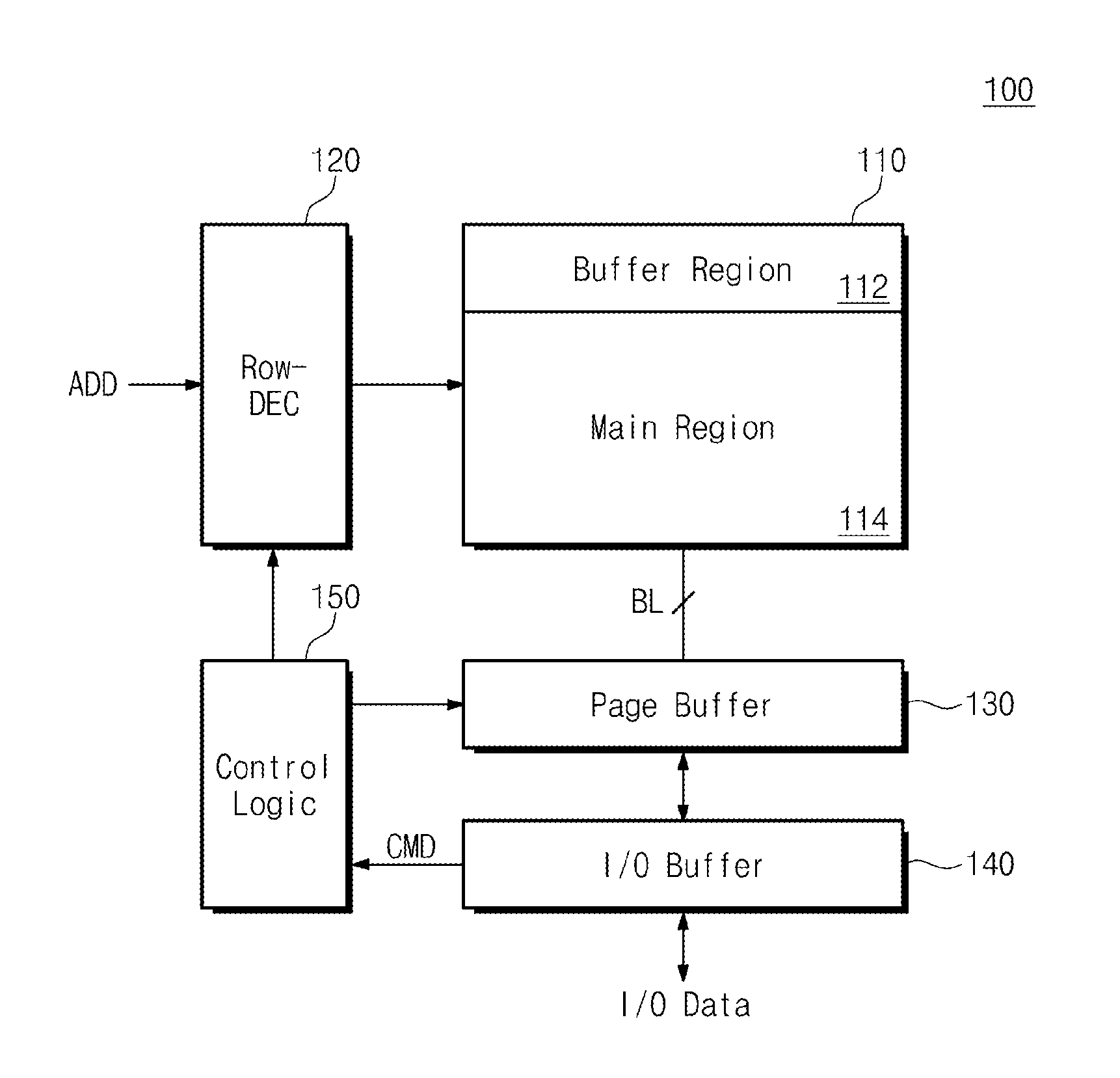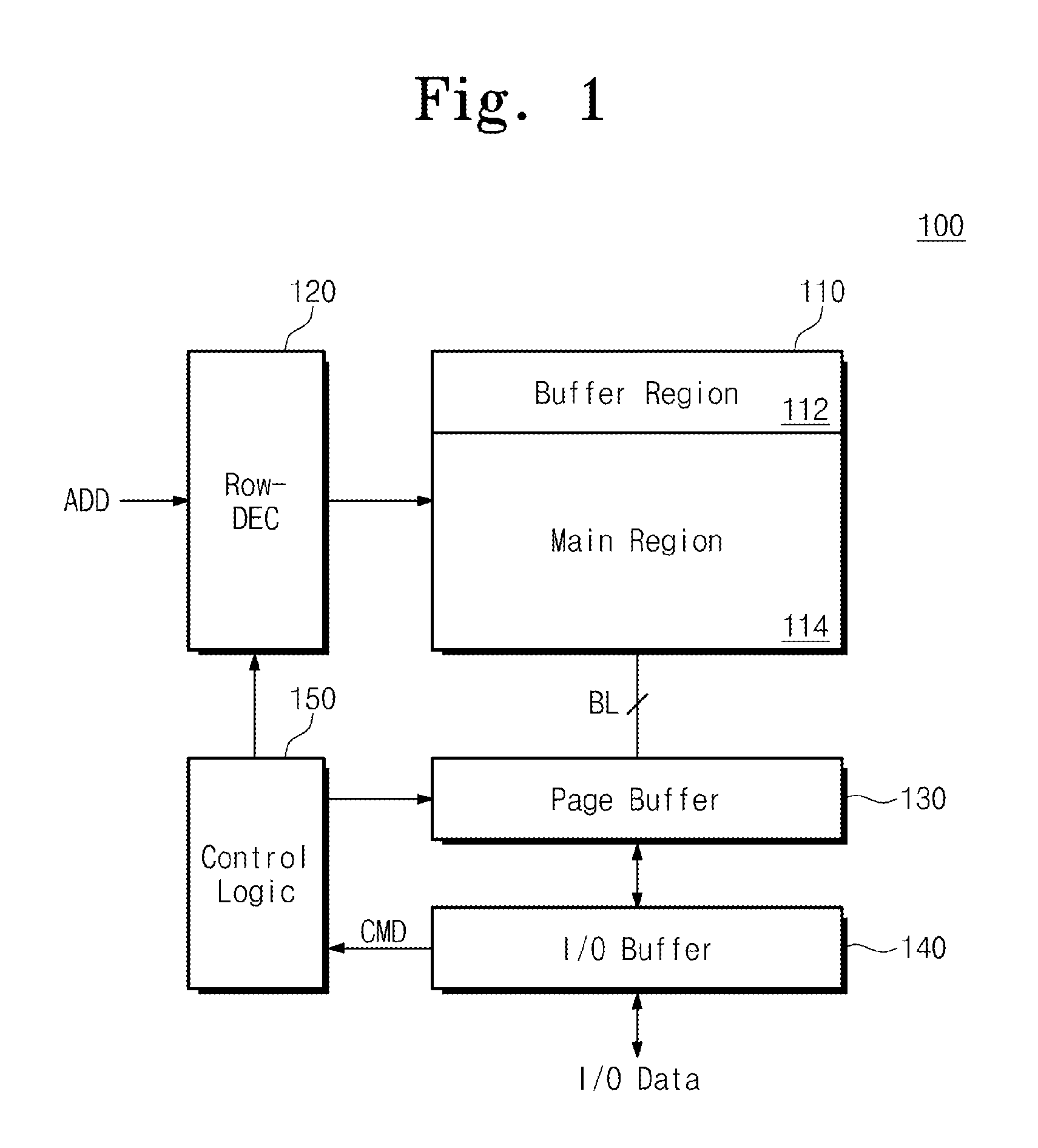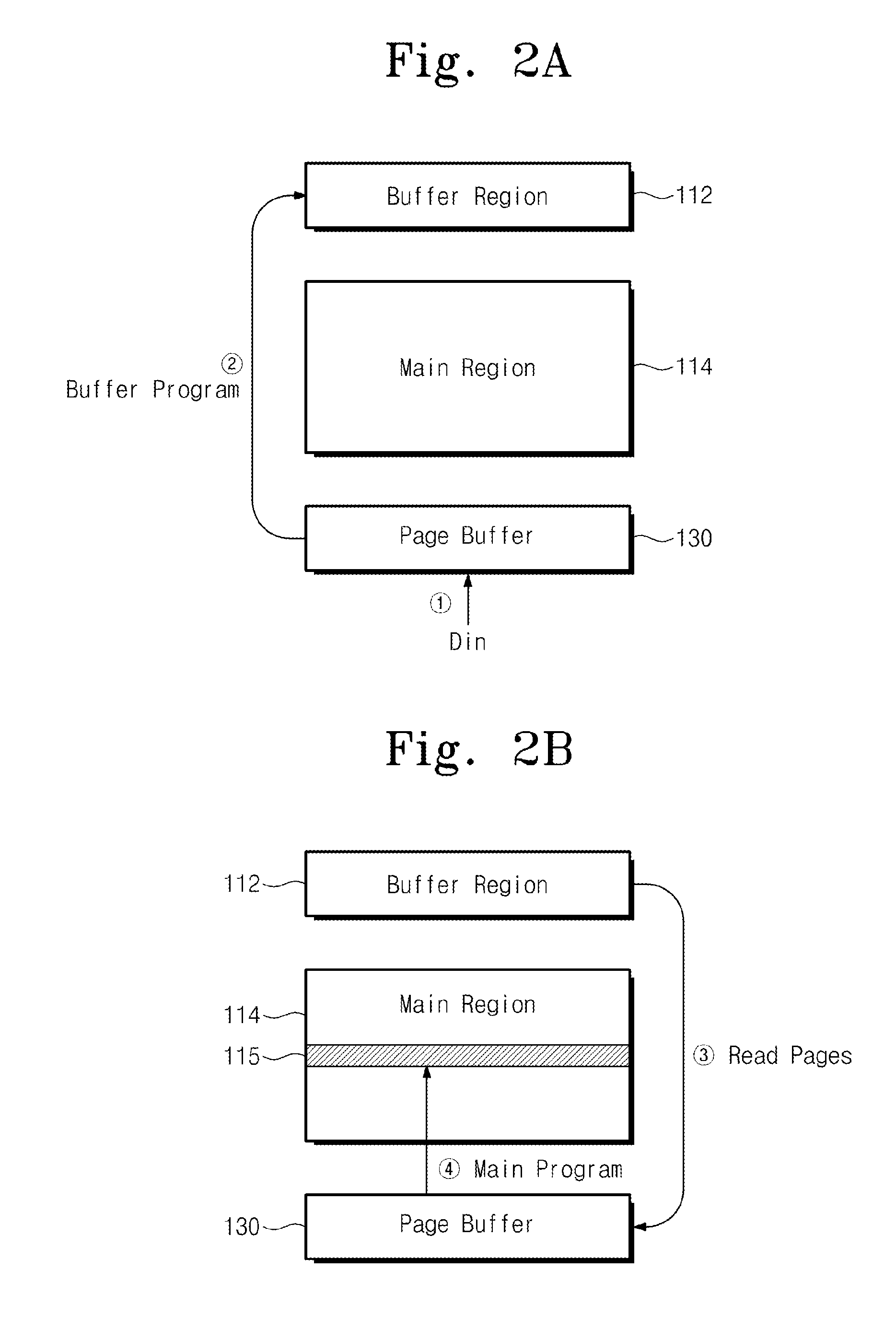Nonvolatile memory and related reprogramming method
a nonvolatile memory and reprogramming technology, applied in the field of semiconductor memory devices, can solve problems such as reducing the operating margin of the device and being susceptible to errors, and achieve the effects of increasing the programming speed of the nonvolatile memory device, enhancing the read margin, and improving the threshold voltage distribution
- Summary
- Abstract
- Description
- Claims
- Application Information
AI Technical Summary
Benefits of technology
Problems solved by technology
Method used
Image
Examples
Embodiment Construction
[0022]Embodiments of the inventive concept are described below with reference to the accompanying drawings. These embodiments are presented as teaching examples and should not be construed to limit the scope of the inventive concept.
[0023]In the description that follows, certain embodiments are described with respect to a flash memory device. However, the inventive concept can be applied to other forms of nonvolatile memory devices, such as PRAM, MRAM, ReRAM, FRAM, NOR flash memory, and others.
[0024]FIG. 1 is a block diagram of a nonvolatile memory device 100 according to an embodiment of the inventive concept.
[0025]Referring to FIG. 1, nonvolatile memory device 100 comprises a cell array 110 having a buffer area 112 and a main area 114. Nonvolatile memory device 100 programs data stored in buffer area 112 to main area 114. Such a programming operation is referred to as an OBP operation.
[0026]Cell array 110 is connected to a row decoder 120 through wordlines (WLs) and selection line...
PUM
 Login to View More
Login to View More Abstract
Description
Claims
Application Information
 Login to View More
Login to View More - R&D
- Intellectual Property
- Life Sciences
- Materials
- Tech Scout
- Unparalleled Data Quality
- Higher Quality Content
- 60% Fewer Hallucinations
Browse by: Latest US Patents, China's latest patents, Technical Efficacy Thesaurus, Application Domain, Technology Topic, Popular Technical Reports.
© 2025 PatSnap. All rights reserved.Legal|Privacy policy|Modern Slavery Act Transparency Statement|Sitemap|About US| Contact US: help@patsnap.com



